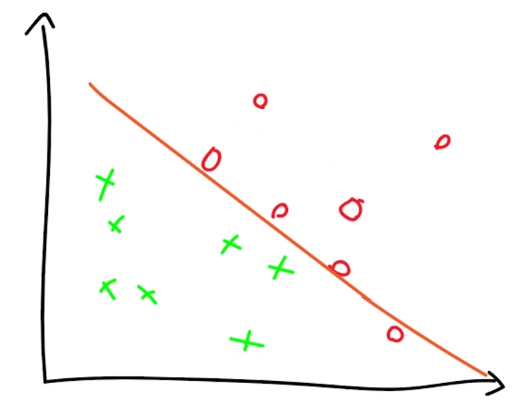Machine Learning Basics

Why should you learn Machine Learning? It’s no secret that machine learning and AI is one of the most popular buzzwords of this decade, but is the hype justified? Lets take a closer look at three areas in which Machine Learning has changed or will change our way of life:
E-health: With the use of Machine learning we have in recent years seen several studies where a trained algorithm were capable of predicting what kind of disease a person was suffering from, despite the doctors could not. The use of such technology in everyday healthcare is however only in its early stages but in the future we would most likely see that Algorithms will give a second oppinion on the doctors judgment.
Transportation: Transportation has for centuries been an important area that we as humans benefit from in our daily life. It’s therefore no wonder that every generation has been trying to optimize and improve the way we transport ourselves from A to B. With the progress in Machine Learning transportation is now ready to move into the next area namly autonomous driving, where our cars, trains and airplanes can operate without the interaction of humans. This will not only decrease the overall costs of transportation but most likely also decrease the amount of road accidents.
Entertainment: An area which for years has already been benefitting from MI is entertainment. You might be seeing it right now as this article most likely got your attention through a newsfeed which based on tags and historical data recommended it to you. This can not only help creators keeping you on their site but it can also sort out all the content that you have no interrest in, making it a win-win situation.
Machine Learning Types
So now that we have seen three areas that MI is influencing in a positive manner, its time to take a closer look at the different types of Machine learning. Within the area of Machine Learning we have the following three main types:

Unsupervised Learning
The first area that we’re diving into is unsupervised learning, which is a learning type where there is “No Teacher”, in Machine Learning this means that the data we are using to train our algorithm is yet to be labeled. e.g
Labeled data would be a data entity with the following specs:
- Length: 30, Height: 20, Type: Box
Whereas an unlabled data entity would be:
- Length: 30, Height: 20 Type: ?
Its therefore up to our algorithm to figure out what this entity is and where it belongs. This can for example be done using clustering algorithms.
In a graph this would look like the following:

In the above picture we see that all our data entities are circles but they still have a length and height that difference them from each other. Our algorithm can then based on its training decide which type a new entity belongs to by looking at the length and height.
Supervised Learning
In supervised learning all our data entities have been labeled. In the below example we are trying to use linear regression to make a Email spam algorithm. As we now know which emails is “good” signed with a green Plus and which is “Bad” signed with a red circle, our algorithm will try make a linear modelling approach to differentiate them. So when we get a new email in our Inbox our algorithm will just have to see whether it is placed below or above the line.

Reinforcement Learning
Compared to the first two types, Reinforcement Learning is in a category of its own. The idea behind this approach is that we are continuously training our algorithms, in order to make them smarter through their interactions with the environment.

Our Algorithm is the Agent, and it makes Actions towards the environment(Env) that is sees. These actions then changes the State of the Agent. Besides changing the State of the Agent the Agent also receives either positive or negative Reward in order for it learn which Actions were right.
For more see my Machine Learning Tutorial: https://youtu.be/E3l_aeGjkeI


Kommentarer
Send en kommentar